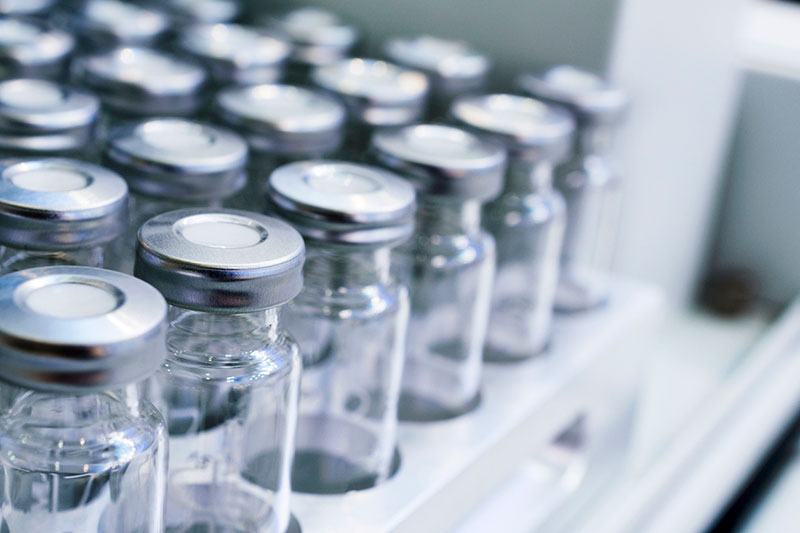Medical and pharmaceutical products are often packaged in fluid-filled containers. At times, such containers are subject to temperature variations that cause them to expand or contract.
During such fluctuations, the containers can develop cracks or pinholes. Bacteria and other contaminants can taint the contents of the containers making them unsafe for human use.
Nikka Densok USA conducts container closure integrity testing (CCIT) using high voltage leak detection (HVLD) to help medical and pharmaceutical companies provide safe, high-quality products to their patients and customers.
What is HVLD?
HVLD is High Voltage Leak Detection, a sensitive, non-destructive technology to test container closure integrity in a variety of liquid-filled pharmaceutical and medical containers including glass vials and ampoules, IV-bags, Blow Fill Seal (BFS) bottles and cards and pre-filled syringes.
HVLD can be used to conduct CCIT on any liquid-filled product as long as the container is made of electrically insulated material and it contains an electrically conductive solution.
How does HVLD work?
During HVLD, product containers are scanned with electrode probes of various types. Containers used can be glass, plastic or poly-laminates. To be tested, the product or container typically needs to be approximately 30% full of liquid.
A high-frequency voltage potential, or spark, is applied to the container and the current volume is measured. The current seeks path of least resistance to the container.
If a container is defective, the resulting resistance differential and change in current flow through the liquid in the container will indicate the presence of container seal defects, pinholes, leaks or cracks.
A defective container will have a larger electric current volume than a container with no leaks.
Nikka Densok’s HVLD pinhole detection systems can be customized to meet a variety of project needs. The HVLD systems can process product containers made of electrically insulated materials such as glass, rubber, plastic, or plastic film at production speeds.
Where applicable, Nikka Densok’s pinhole detection systems feature multiple, high-voltage stations; a variety of product posture conditions to ensure inspection of entire containers; the latest, enhanced electronics and built-in safety features to eliminate product breakage.
What industries benefit from leak detection?
Pharmaceutical industries use various containers to protect contents, such as saline or drug preparations, from outside air and contamination. HVLD and pinhole inspection keep critical contents safer for final delivery.
- Testing can be conducted on ampoules from 1 ml to 30 ml at speeds up to 400 per minute and on vials from 2 ml to 50 ml up to 400 ampoules per minute.
- Various sizes of sachets can be tested with brush electrodes at a single inspection station.
- Blow Fill Seal (BFS) cards can be tested at up to 125 cards per minute.
- Testing can be conducted on pre-filled syringes of 1 ml, 2 ml and 5 ml sizes at speeds of up to 300 per minute.
- Up to 120 IV bags per minute can be tested in sizes ranging from 50 ml to1000 ml.
For most applications, size changeovers can be made very quickly, in about 10 to 20 minutes, depending on the type of container being tested.
The Nikka Densok Difference
Dye immersion and microbial immersion were once two leading methods for CCIT. Both methods are destructive and subject to variation. Non-destructive methods for CCIT are preferred according to guidance released by the United States Pharmacopeia (USP) in 2016.
Nikka Densok uses proprietary HVLD technology to identify cracks and ≥5 micron pinholes. This method offers a non-destructive, consistent and accurate method for leak detection. The technology does not contaminate the container being tested and is non-invasive.
Today, no other system in the world is able to detect both holes and cracks as consistently as Nikka Densok’s High Voltage Leak Detection systems. Plus, the system exposes packages and products to lower voltage than other conductivity-based solutions.
Nikka Densok’s HVLD technology can easily be connected to upstream and downstream equipment.
Watch our instructional videos, download presentations, papers or brochures and find out more about Nikka Densok’s cutting-edge HVLD technology here.

